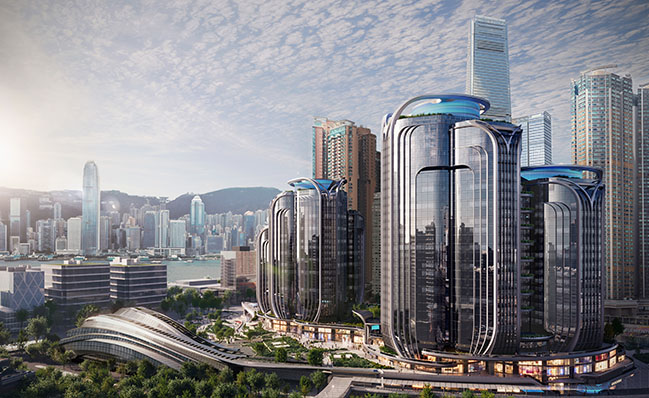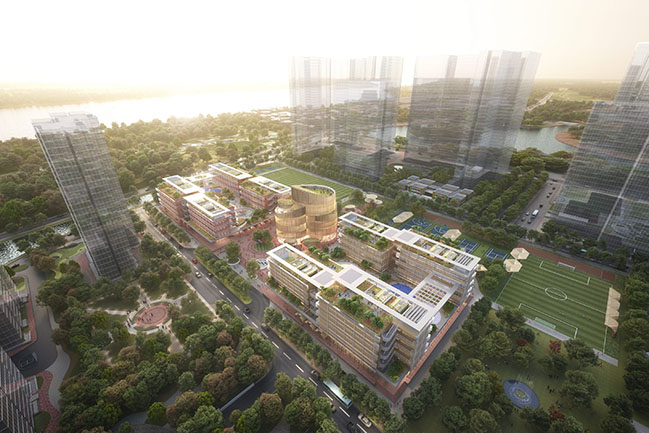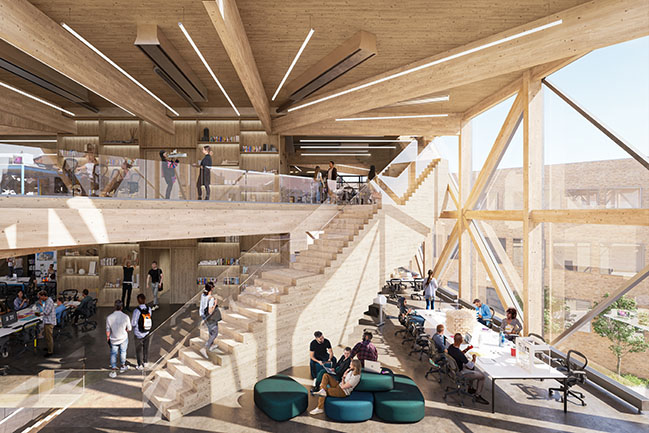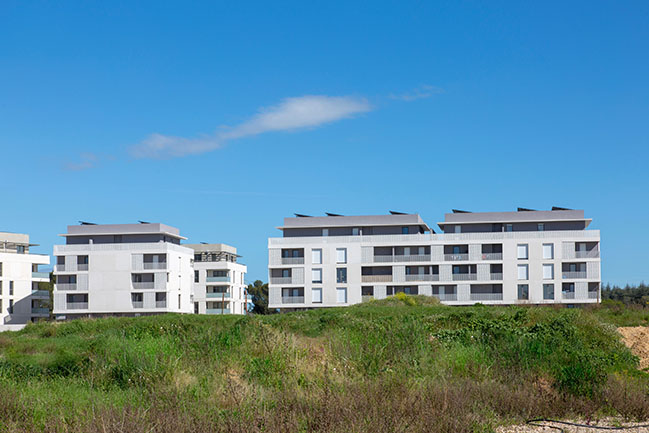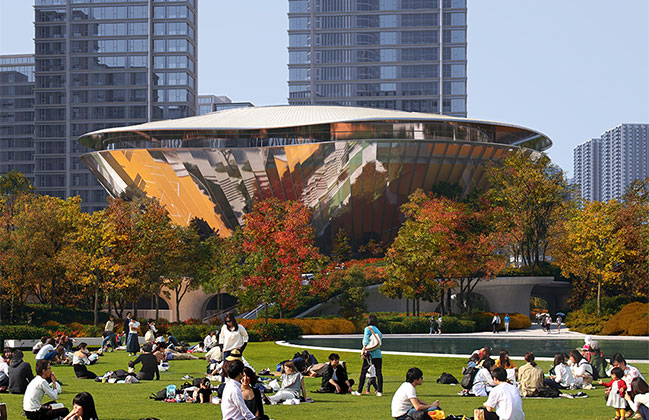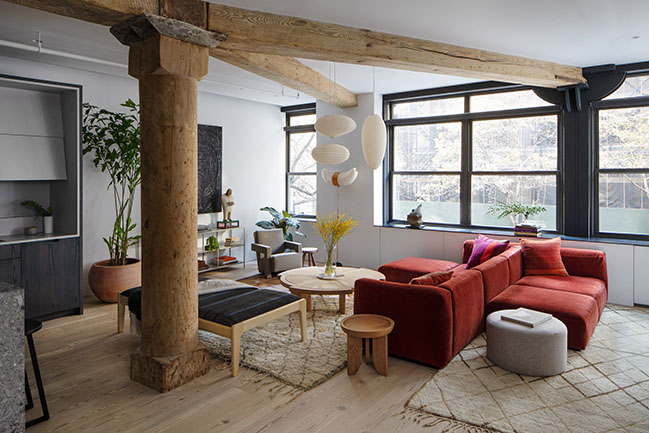06 / 04
2024
A colourful inhabited wall enlivens flexible, family-friendly hotel suites in MVRDV's Shenzhen Women & Children's Centre...
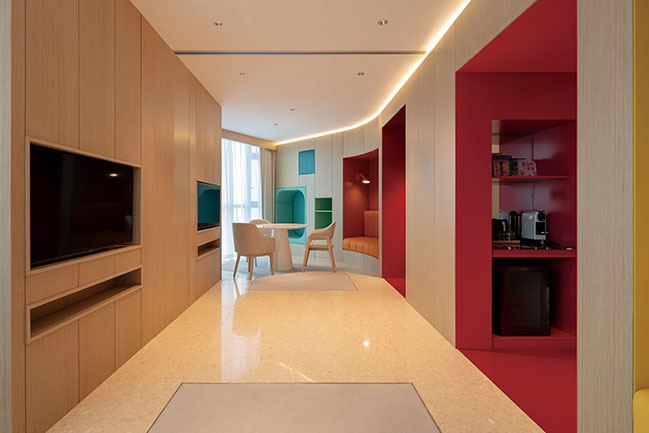
> The Tribune by MVRDV
> Gate M West Bund Dream Center by MVRDV
From the architect: MVRDV has completed a pair of special, family-friendly hotel suites inside the Shenzhen Women & Children’s Centre, a 100-metre-tall tower that MVRDV also recently transformed from its outdated and underperforming original design to a colourful, welcoming facility for the welfare of women and children. With flexibility as their guiding principle, the two suites offer the option to be combined into one shared space for larger families, and are animated by the metre-thick inhabited wall that curves through the space, with colourful niches that provide various functions – from expected items such as closets and desks, to fun additions such as toy cupboards and hidden bunk beds.
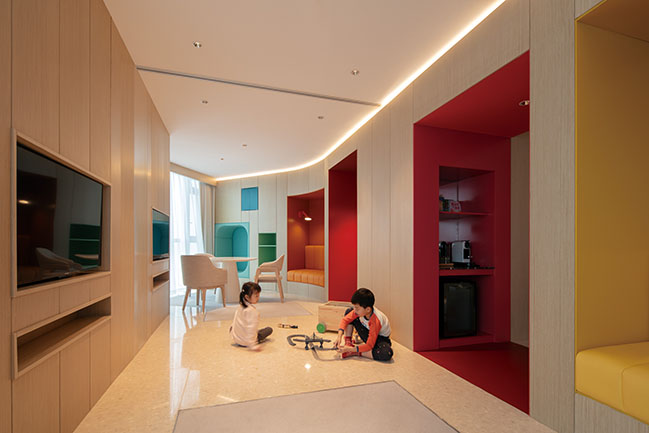
The building itself was originally constructed in 1994, forming part of Shenzhen’s first period of explosive growth, however its rushed design and construction meant that only portions of it could ever put to use. MVRDV’s transformation uses a grid of multi-coloured exterior frames to improve the performance of the façade, turns the building’s courtyard from a parking lot into a public space, and extends a pedestrian tunnel to provide access to the Shenzhen Metro directly from the building.
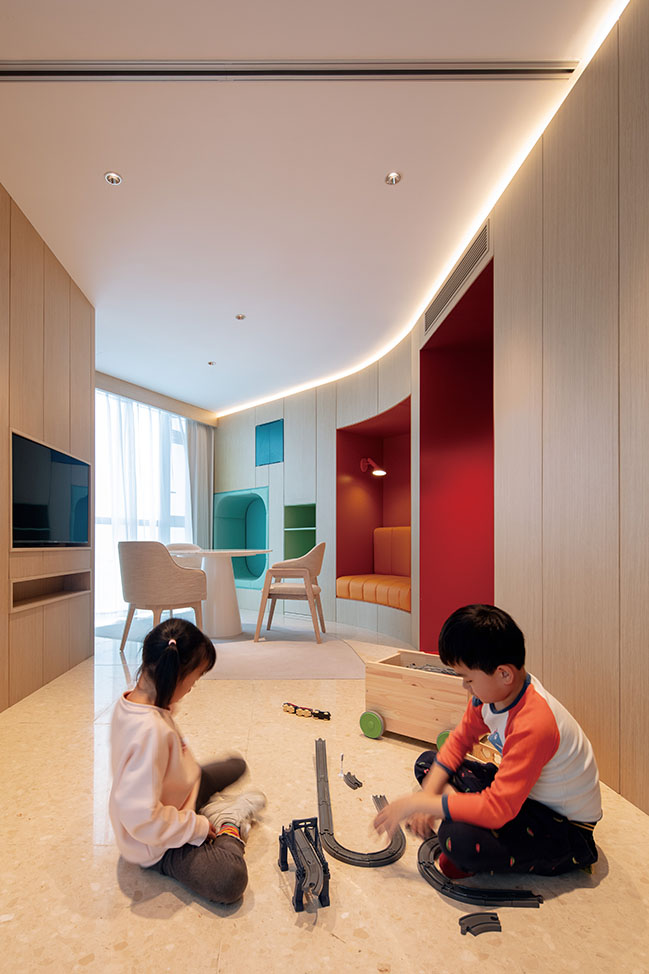
All of this was achieved while reusing the original structure, with its 24,000 cubic metres of concrete, which would otherwise have been demolished. As a result, the project was selected as one of 24 model examples of revitalisation by China’s National Development and Reform Commission. The building’s plinth now hosts a wide range of facilities for the welfare of women and children, while the tower provides 194 hotel rooms. Included on each floor of the hotel are one-off rooms designed by a variety of architects who bring their characteristic styles and ideas to the hotel concept.
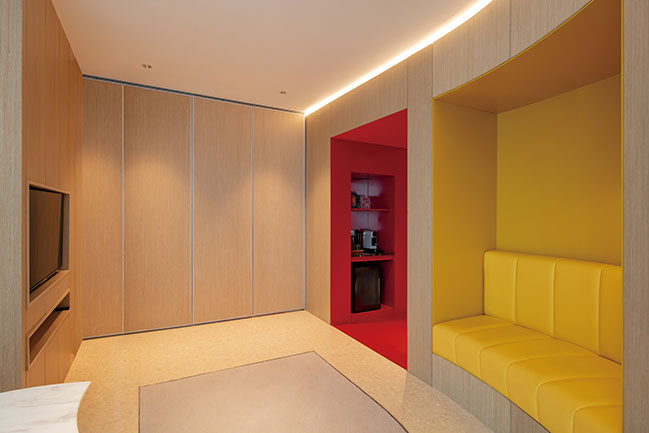
MVRDV’s contribution to this set of special hotel rooms takes the purpose of the Women & Children’s Centre as its starting point, targeting families as the ideal occupants of two adjacent suites. Since no two families are exactly alike, flexibility is a core design principle. One of the key features is therefore the sliding, soundproof wall that divides the two spaces, which allows the design to switch easily between two smaller suites – each with a single bedroom and a space for relaxing, playing, and dining – or a two-bedroom suite connected by a large communal living space between. With the inclusion of folding murphy beds in each of the bedrooms, the design can readily accommodate a range of family types, from a couple to a family of six.
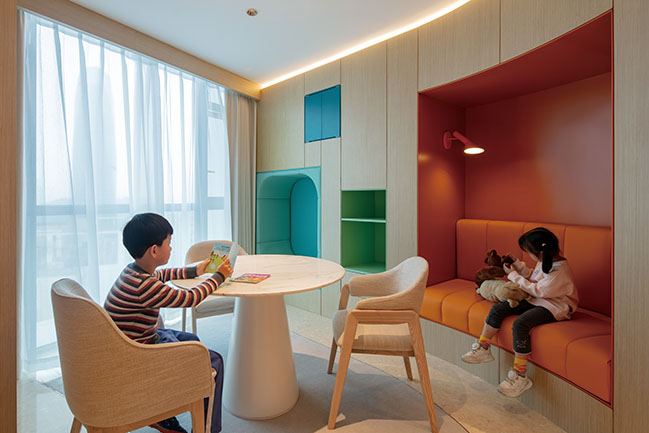
“In many ways, our hotel room at Shenzhen Women & Children’s Centre is a celebration of the transformation of the building as a whole”, says MVRDV founding partner Jacob van Rijs. “The fact that this once-outdated structure has become a popular and charismatic destination for visitors of all ages is a testament to the good that can come from a sustainable rehabilitation of this nature. Family-friendly hotel rooms are a rare exception to the norm, so the fact we were able to offer such a space for parents traveling with their children among the hectic environment of Shenzhen is an added bonus.”
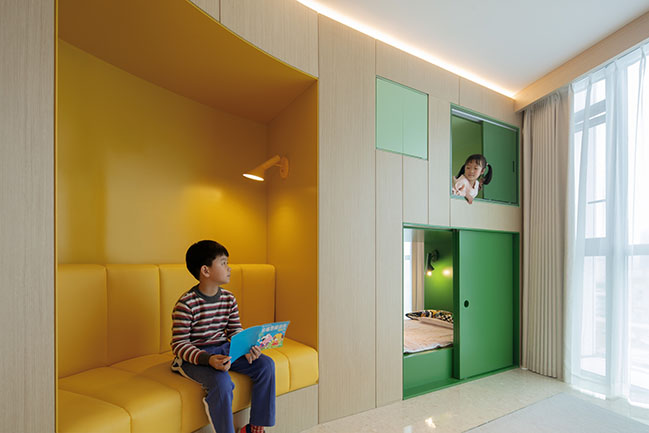
The crucial element that brings this flexible space to life is the inhabited wall that curves through both suites. At over a metre thick, this wooden divider contains a variety of useful functions in deep niches. In each suite, there is a comfortable sofa, a desk, a closet, and a doorway between the bedroom and living space that incorporates a small kitchenette. In addition, one suite has a pair of bunk beds, while the other has a reading nook, a hiding-hole, and a smaller desk especially for children.
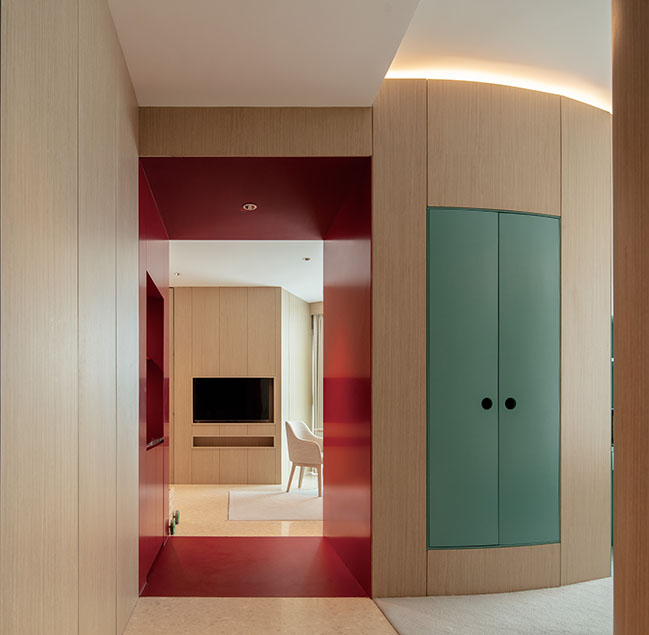
Continuing the bright colours that are present throughout the Shenzhen Women & Children’s Centre, each niche in this inhabited wall adopts its own bright colour. An eclectic selection of bright orange, pink, red, and yellow face the living space, while the niches facing the bedrooms are more calming and consistent, with a range of blue tones in one room and green tones in the other. Outside of these niches, the finishes and furnishings adopt more neutral tones, with wood walls and furniture. The floor of the living space is terrazzo, with sections of carpet in the centre of the room to offer a space for play.
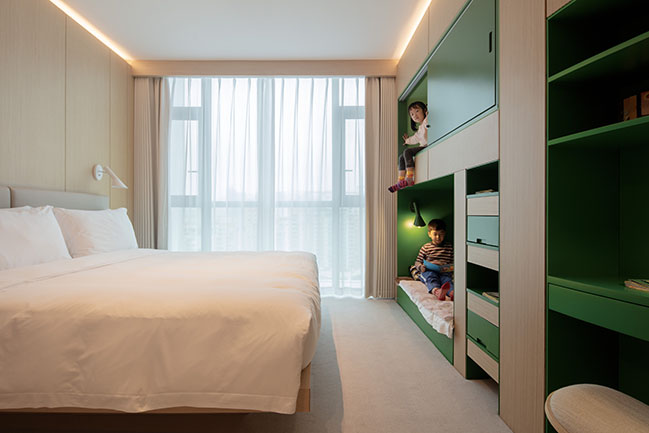
Architect: MVRDV
Client: Shum Yip Group Limited, PRC
Location: Shenzhen, China
Year: 2024
Size: 100 sqm
Founding Partner in charge: Jacob van Rijs
Partner/Director: Wenchian Shi
Design Team: Lorenzo Mattozzi, Luca Xu, Jiameng Li, Giuseppe Mazzaglia
Visualisations: Antonio Luca Coco, Luca Piattelli, Jaroslaw Jeda
Director MVRDV Shanghai: Peter Chang
Co-architect: J&A (Jiang & Associates)
Interior Contractor: Shenzhen Architectural Decoration Group Co. Ltd. (SZADG Group) 深 圳是建筑装饰有限公司
Project Coordination: Shenzhen Women & Children's Building Operation and Management Co., Ltd.
Lighting Consultant: BPI (Brandston Partnership Inc.)
Photographs: © Xia Zhi

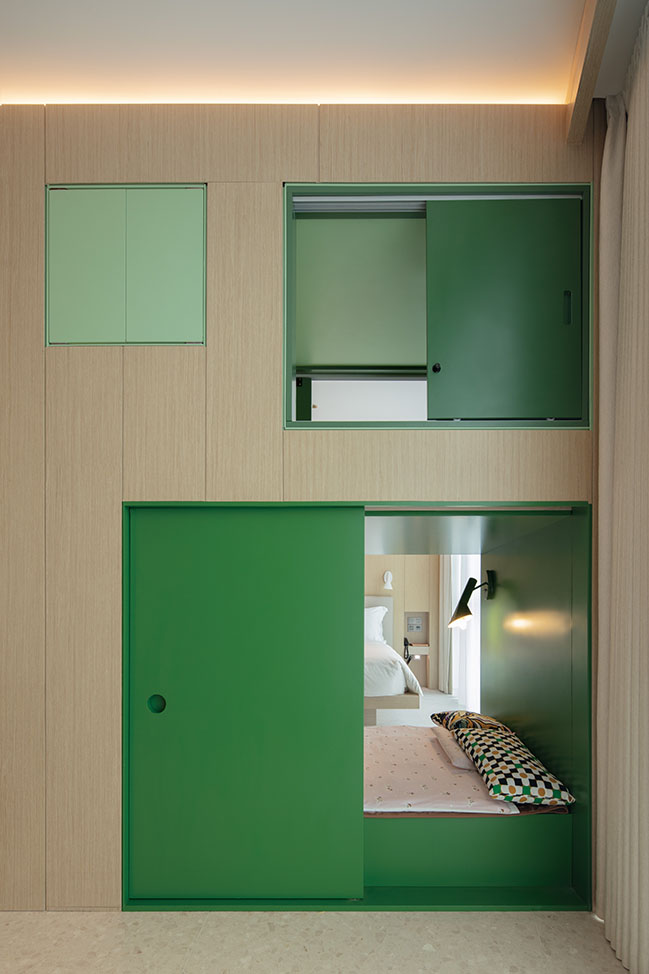
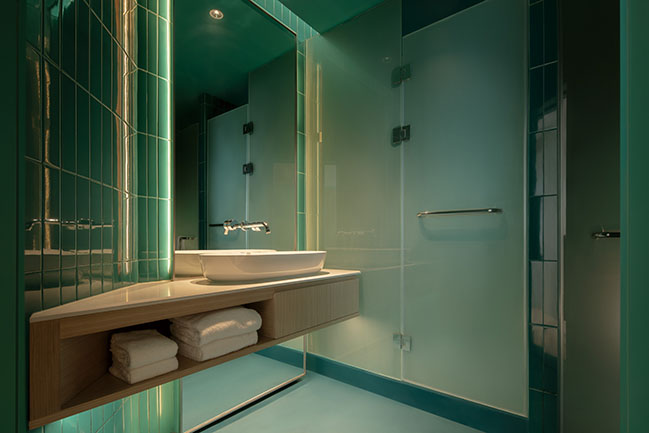
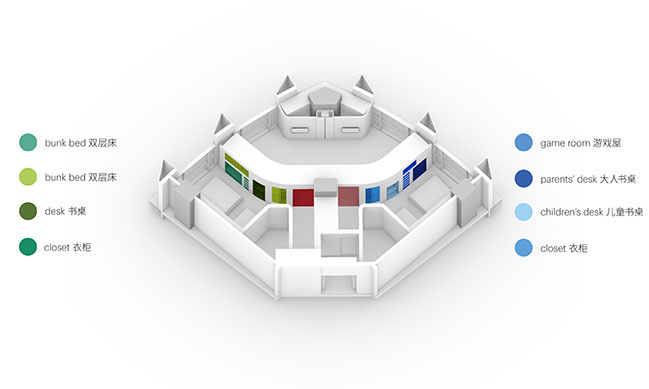
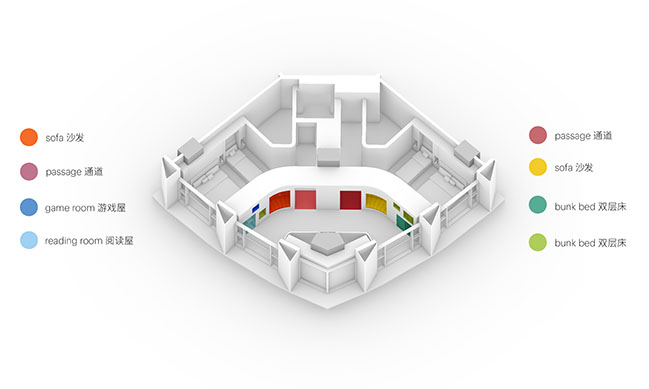
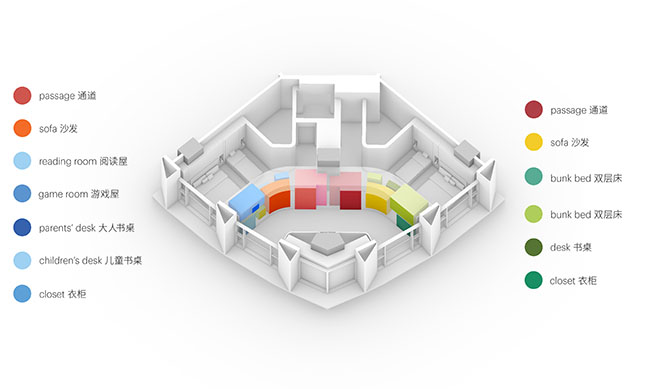
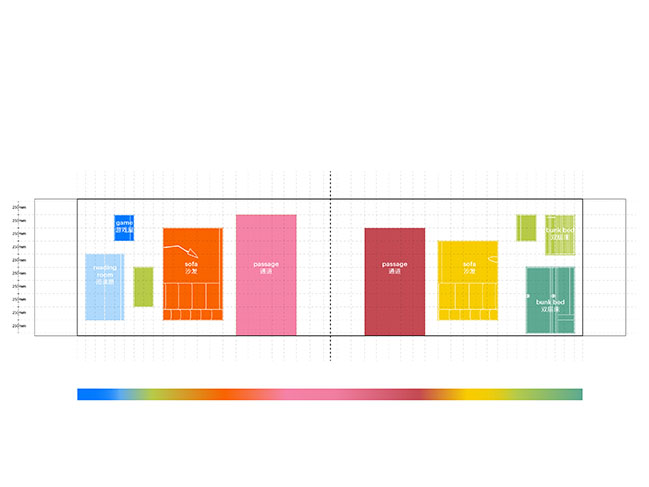
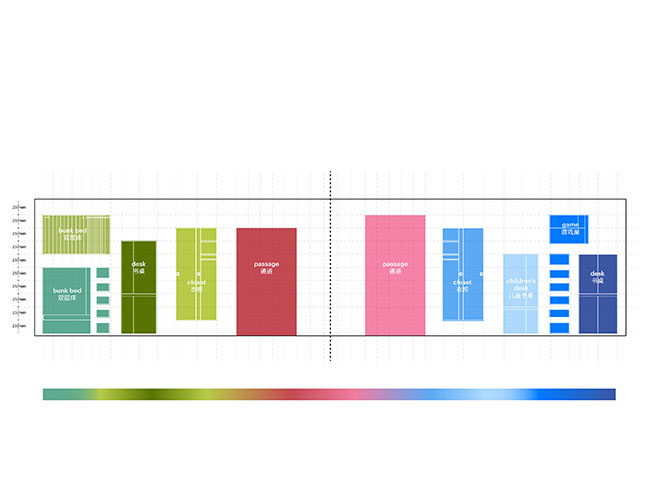
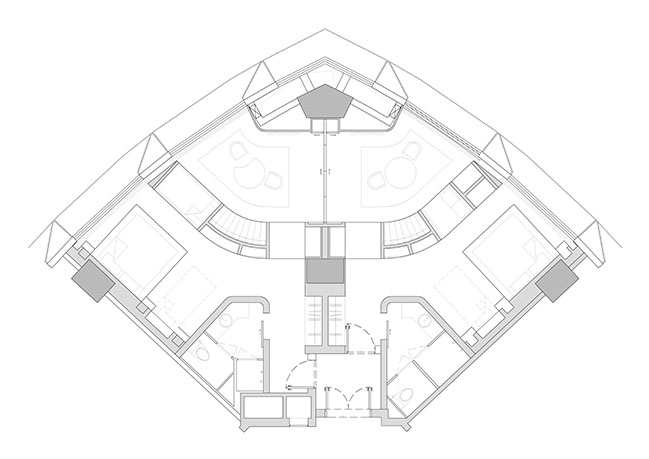
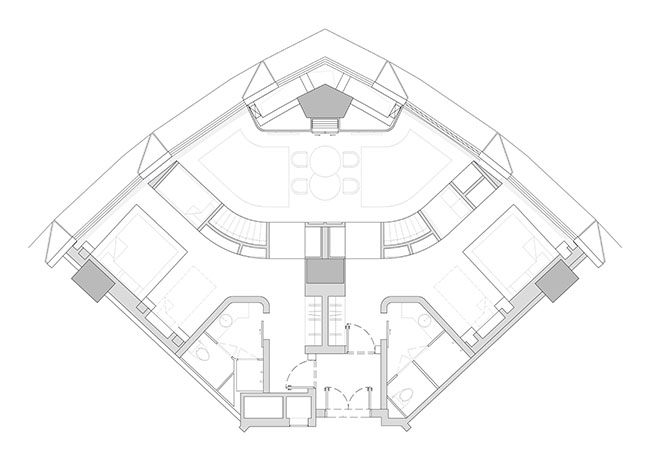
SHENZHEN WOMEN & CHILDREN'S CENTRE
A pioneering example of reuse in China: MVRDV completes transformation of the Shenzhen Women and Children’s Centre

Construction on the MVRDV-designed Shenzhen Women & Children’s Centre is complete, transforming an old mixed-use tower into a vibrant and colourful skyscraper hosting a hotel and a wide range of facilities for the welfare of women and children: a library, an auditorium, a children’s theatre and “discovery hall”, as well as therapy rooms and offices for staff. With its colourful façade, the building is a refreshing presence in Shenzhen’s Futian district; more importantly, at 100 metres tall, the building sets an important precedent for repurposing buildings in a city that is soon to see a “great wave of adaptive reuse”.
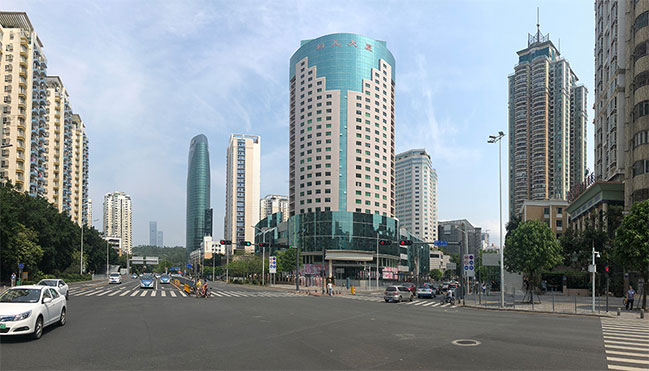
The tower was originally completed in 1994, forming part of Shenzhen’s first period of explosive growth. The rushed approach to its original design was immediately clear: due to persistent fire safety concerns, the commercial units in the plinth were not opened until 2002, and the tower itself remained empty indefinitely.
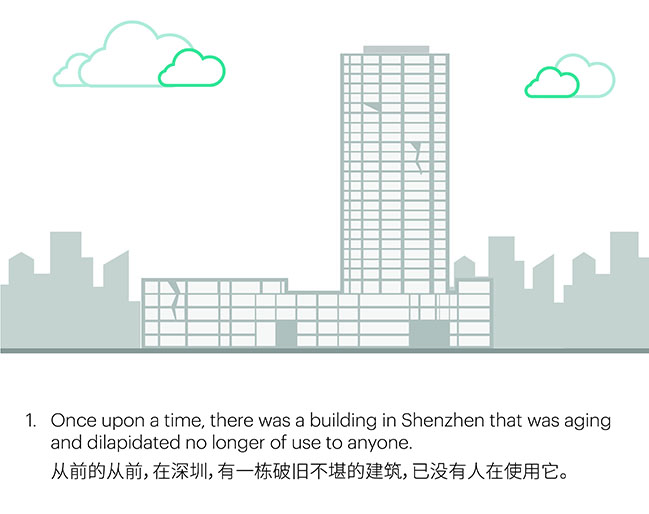
With the changing needs of the building’s users, it fell short of environmental requirements, and by 2019 it was clear that the building was no longer fit for purpose. Owing to China’s commitment to achieving carbon peak by 2030 and carbon neutrality by 2060, the building was selected as one of 24 model examples of revitalisation by the National Development and Reform Commission.
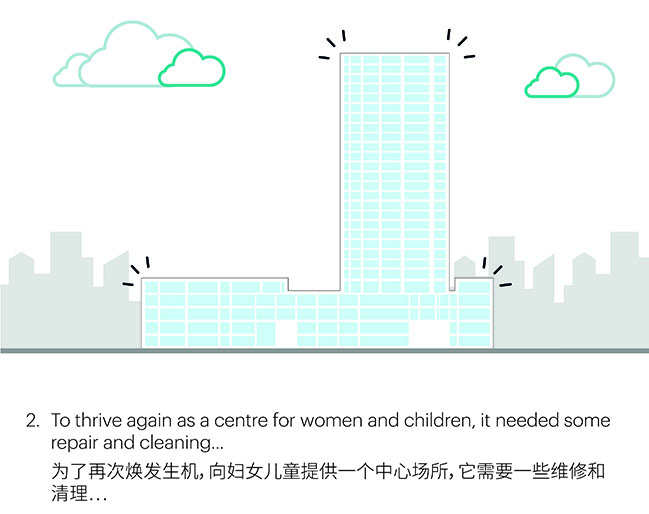
To rectify the building’s problems, MVRDV designed a comprehensive transformation that would allow the building’s structure to be reused – a far more sustainable approach than demolishing and rebuilding. The most visible element of this transformation is the new façade: a grid of multi-coloured exterior frames increases the depth of the façade to a full metre. These frames provide extra shading to reduce thermal heat gain, and also incorporate openable panels on the inside that allow for natural ventilation – thus increasing occupants’ comfort and reducing the building’s reliance on air conditioning.
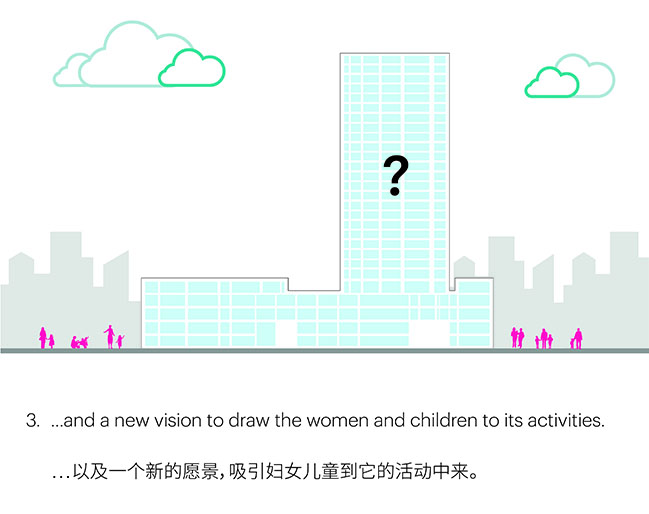
The design also transforms multiple elements of the building. The tower crown provides cover for a large accessible terrace offering a 360-degree panorama of the neighbourhood below. The courtyard, which was originally used for car parking, has been converted into a public space with a food court. The entrance to the city’s metro, which previously cluttered the pavement outside, has been moved inside the building to better connect it to public transit networks and reinforce the transition away from car-dependence.
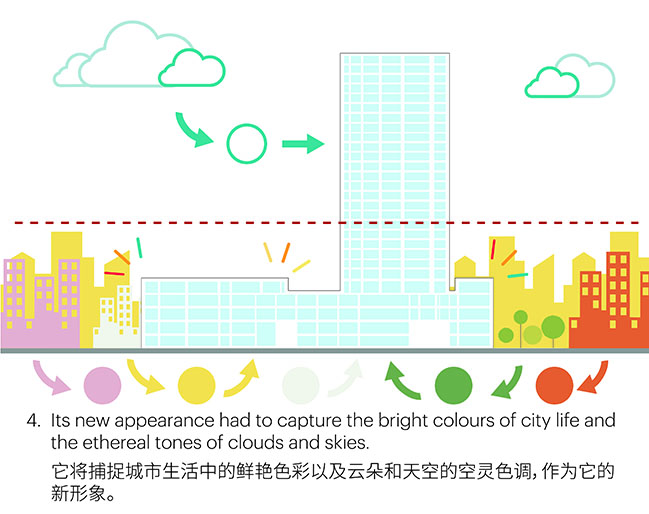
The transformation of the building was achieved while saving approximately 24,000 cubic metres of concrete from the original structure, a reuse resulting in a carbon saving equivalent to 11,800 flights from Amsterdam to Shenzhen. Small additions to the structure were also made, filling in some of the original design’s awkward geometry to create simple, efficient floorplans.
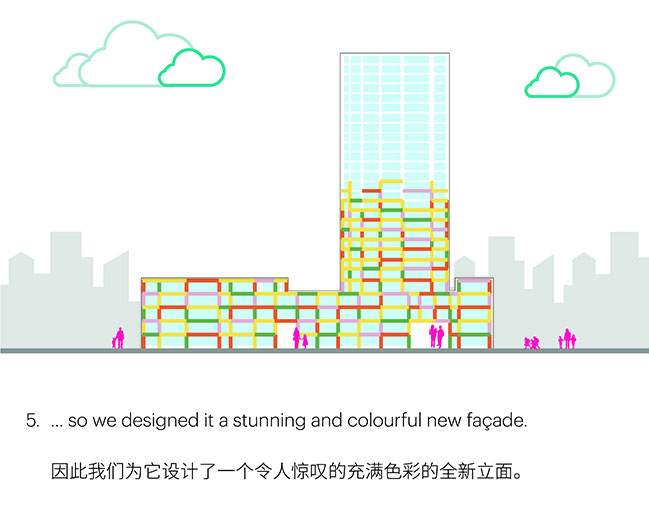
“The Shenzhen Women and Children’s Centre could be a pioneering project for Shenzhen”, says MVRDV founding partner Jacob van Rijs. “With the city’s fast-paced growth, many existing buildings were not really designed to have a long lifespan. That is a recipe for either an epidemic of demolition or, ideally, a great wave of adaptive reuse. Showing that even the most inadequate of these structures can be reused could save a crazy amount of concrete going to landfill – and eliminate millions of tonnes of carbon emissions that would have been created replacing that concrete.”

The colours of the façade – yellow, orange, pink, and green – help to communicate the building’s layout. The multicoloured plinth clearly advertises its function as a service centre for mothers and their children; on the tower, which hosts the hotel, these colours give way to a more neutral white. On the ground floor, the four primary entrances to the complex are each highlighted by a concentration of a different colour, making the building easy to navigate and welcoming to visitors.
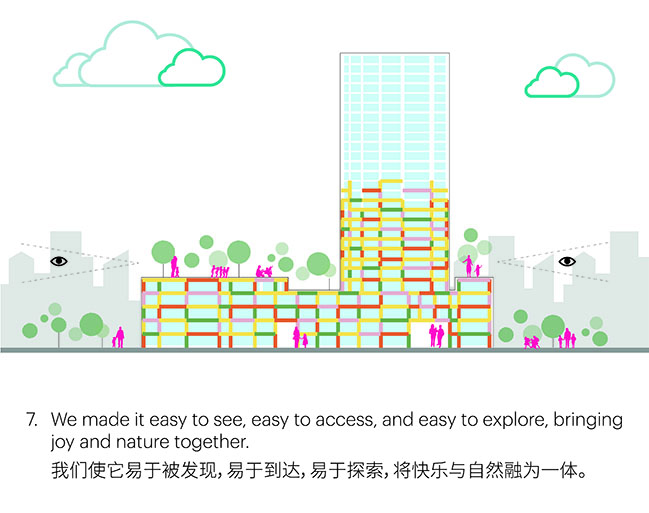
This colourful and communicative approach continues into the main lobby. Here, a structure of nine “rooms” hosts diverse functions that together form a playground-like space for children to enhance their enjoyment during a visit. The joyful colours of this structure reinforce the building’s purpose as a space where children are given priority.
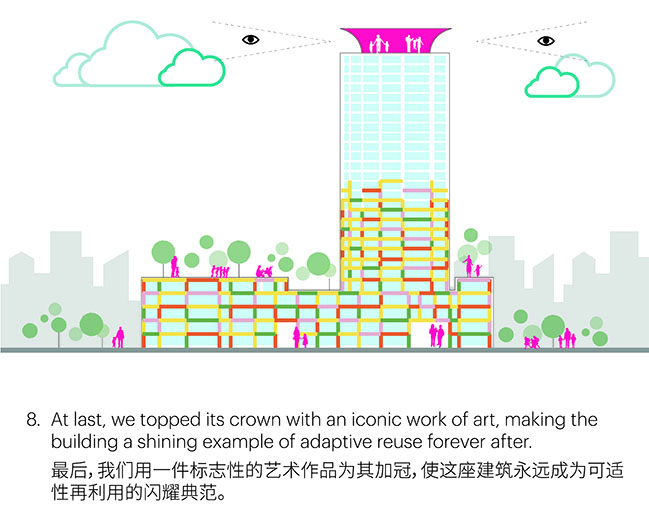
Architect: MVRDV
Client: Shum Yip Group Limited
Location: Shenzhen, China
Year: 2023
Size: 57,900 sqm
Founding Partner in charge: Jacob van Rijs
Partner: Wenchian Shi
Director MVRDV Asia: Steven Smit, Peter Chang
Design Team: Lorenzo Mattozzi, Marco Gazzola, Giuseppe Mazzaglia, Daehee Suk, Fredy Fortich, Chi Zhang, Bertrand Tan, Siyi Pan, Albert Parfonov, Andrius Ribikauskas, Enrica Perrot, Martina Franco, Jiameng Li, Agnieszka Dabek, Paula Vargas Torres, Elisa Paneni, Peter Chang, Luca Xu, Hong Yang, Echo Zhai, Zhang Ruochen, Leo Zhang, Huang Cai, Peilu Chen, Xiaoliang Yu, Americo Iannazzone, Yihong Chen, Kefei Yan, Edvan Ardianto
Interiors & Landscape Design: Lorenzo Mattozzi, Fokke Moerel, Pim Bangert, Giovanni Nardi, Daehee Suk, Jiameng Li, Bertrand Tan, Paula Vargas Torres, Luca Xu
MVRDV NEXT: Boudewijn Thomas, Yayun Liu, Changqing Ye
Project coordination: Jammy Zhu
Visualisations: Antonio Luca Coco, Angelo La Delfa, Pavlos Ventouris, Francesco Vitale, Luana La Martina, Jaroslaw Jeda, Emanuele Fortunati
Co-architect / Landscape architect / MEP: SZAD
Project coordination: Shenzhen Women & Children's Building Operation and Management Co.,Ltd.
Facade Consultant: KGE (King Glass Engineering)
Structural engineer: Yuanlizhu Engineering Consultants (Shenzhen) Co.,Ltd.
Lighting Consultant: BPI (Brandston Partnership Inc.)
Cost calculation: Jinxia Property Cost Consultation Co.,Ltd.
Interior architect: Jiang & Associates
Photographs: © Xia Zhi
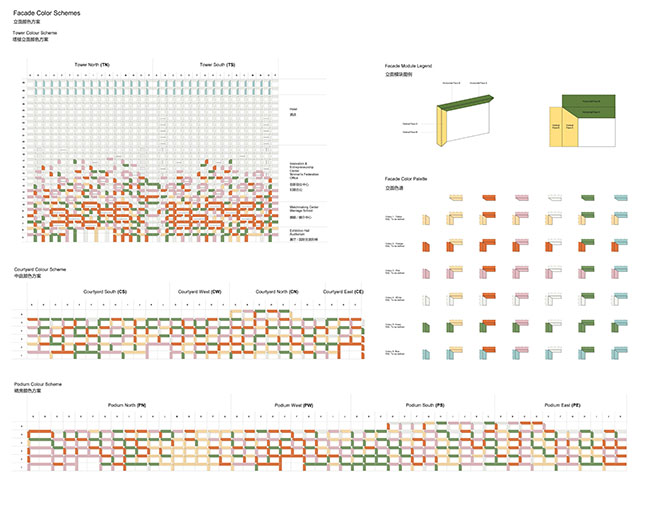
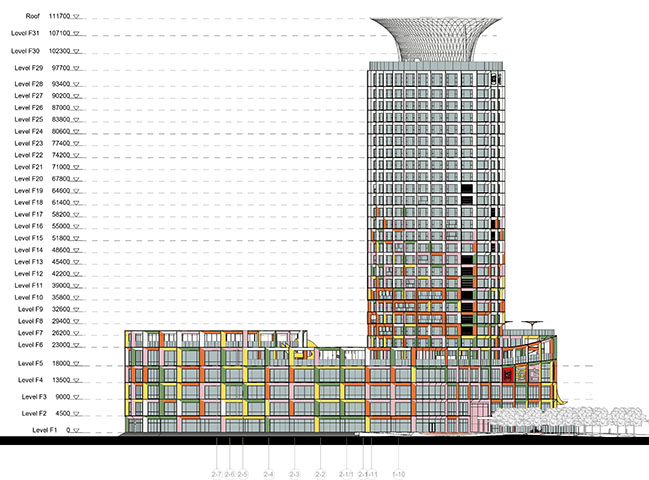
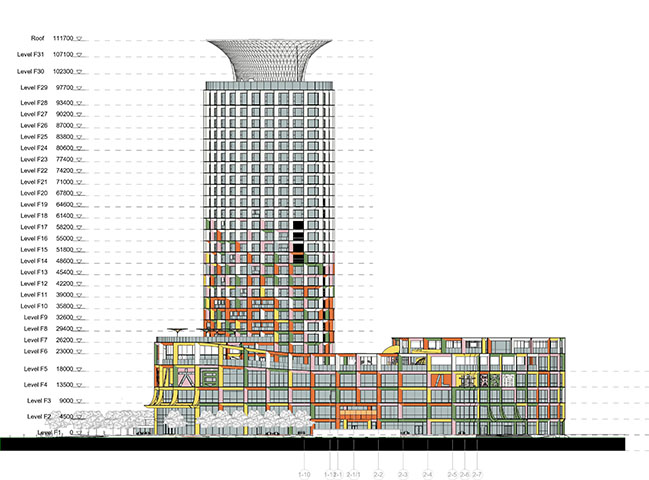
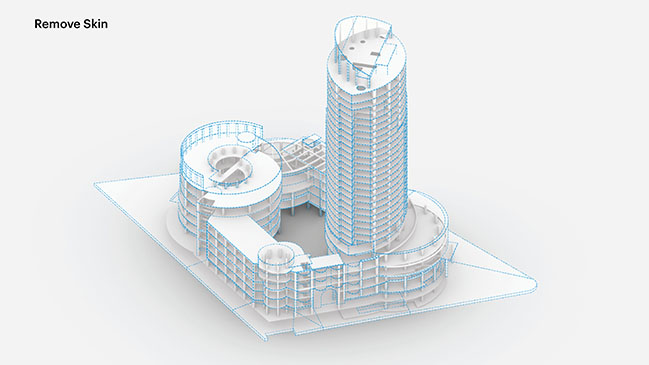
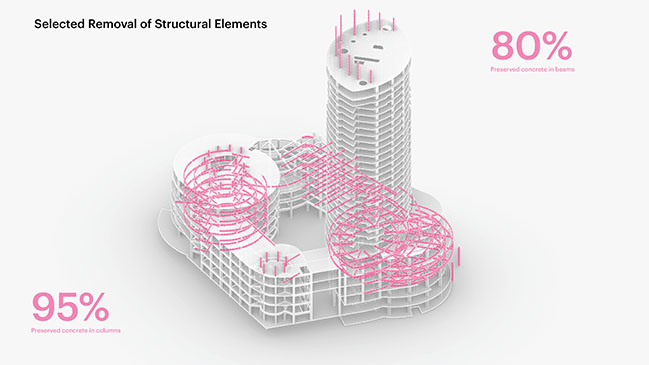
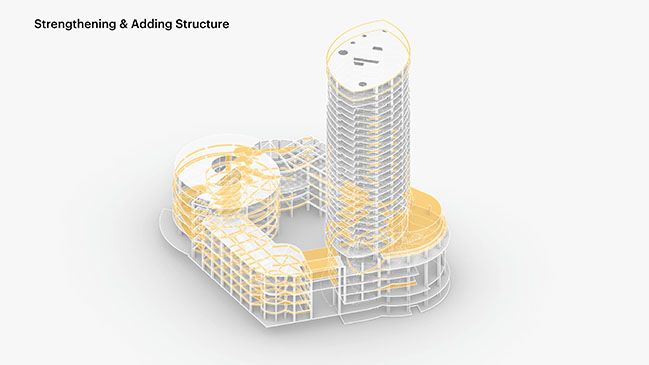
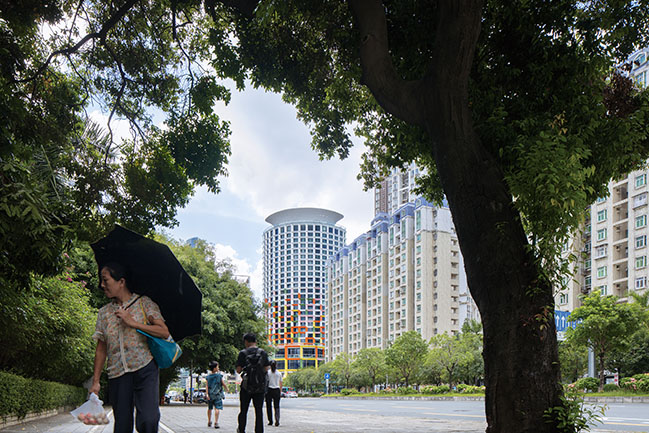
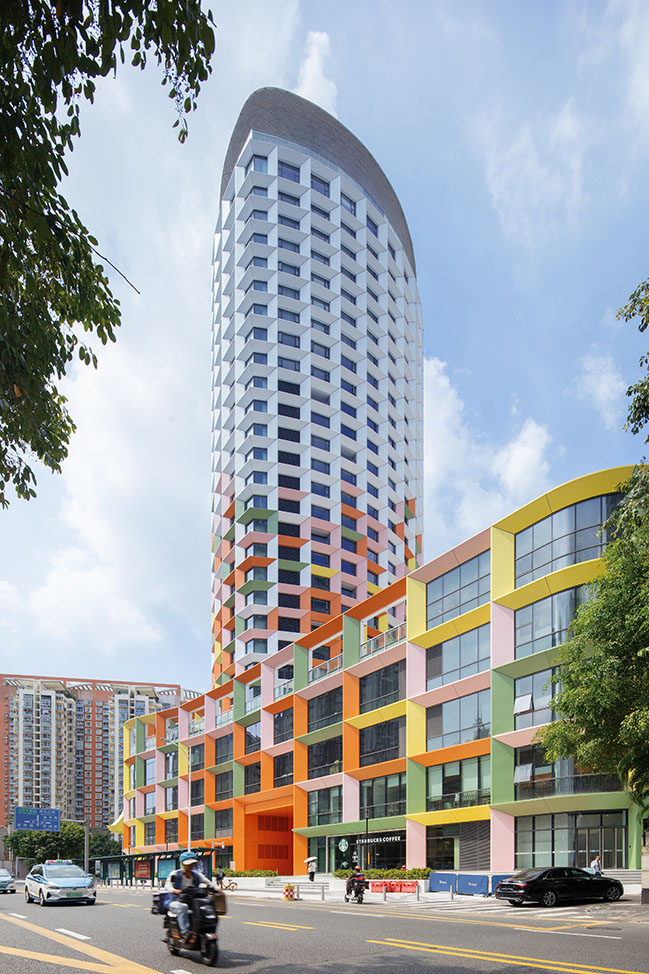
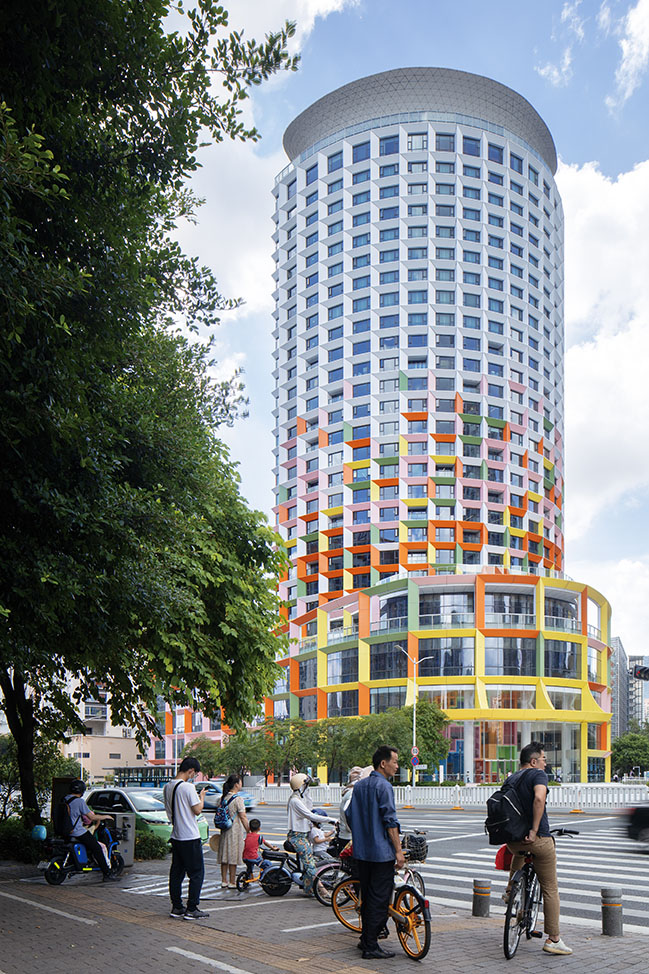
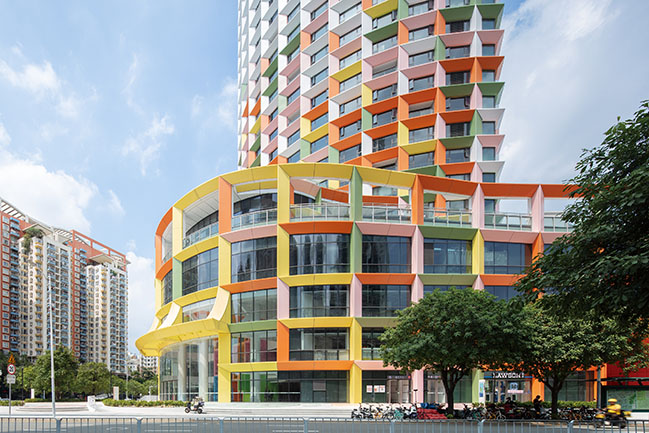
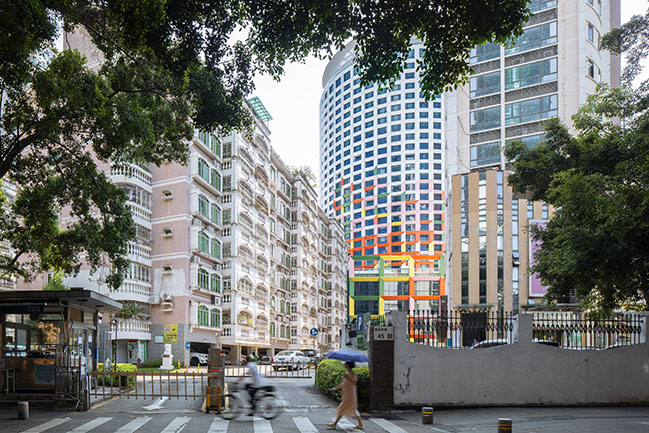
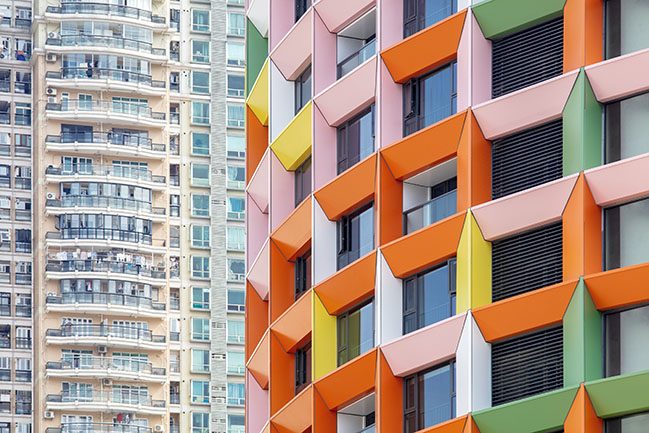
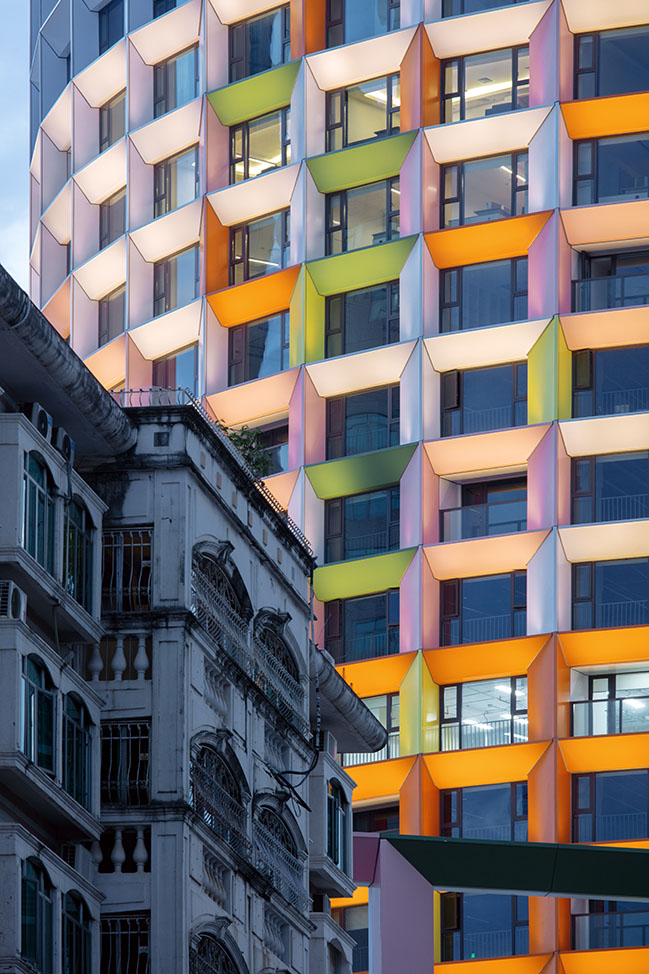
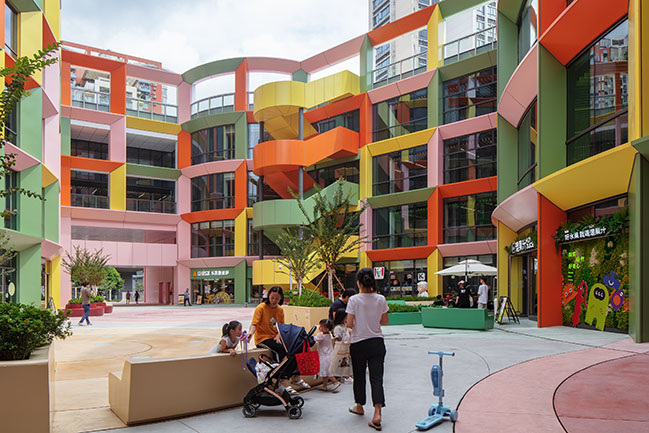
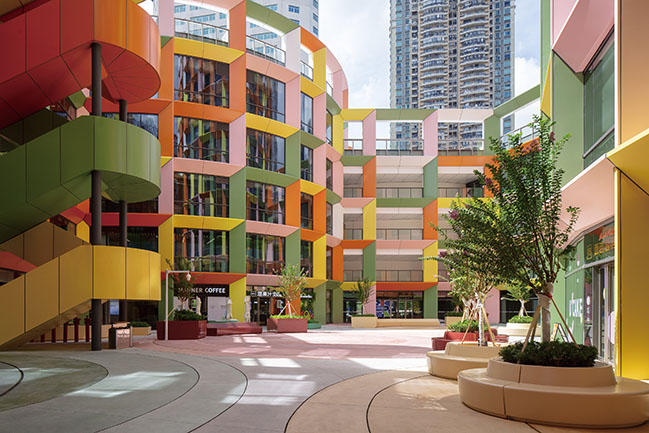
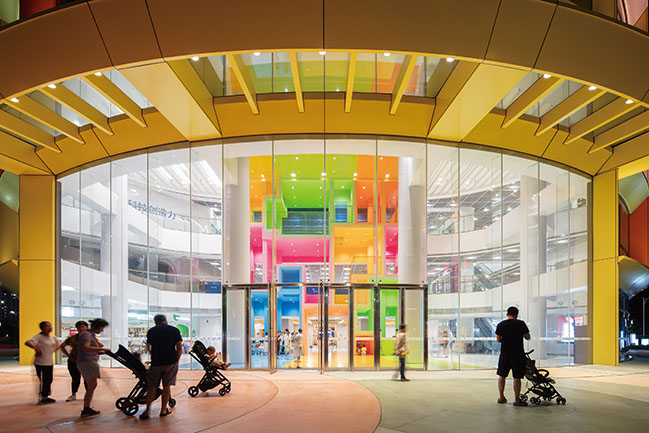
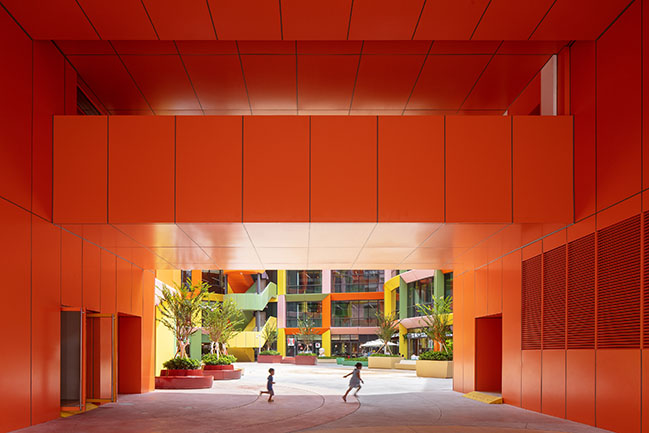
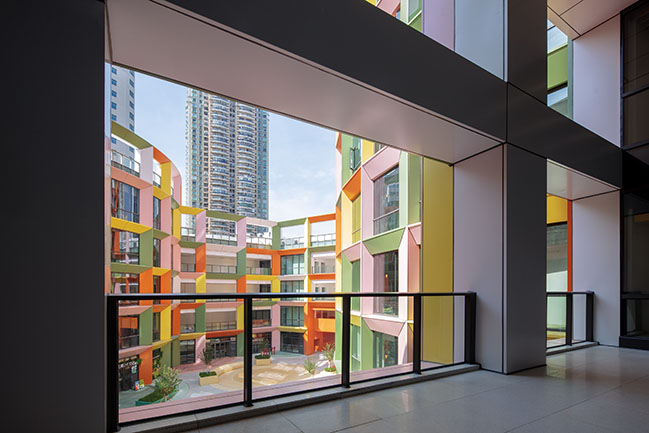
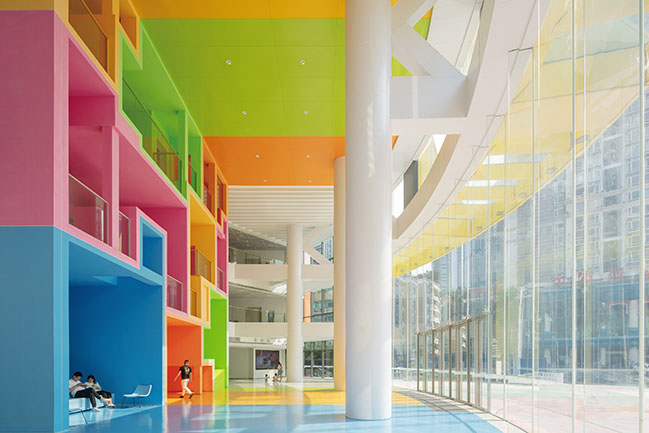
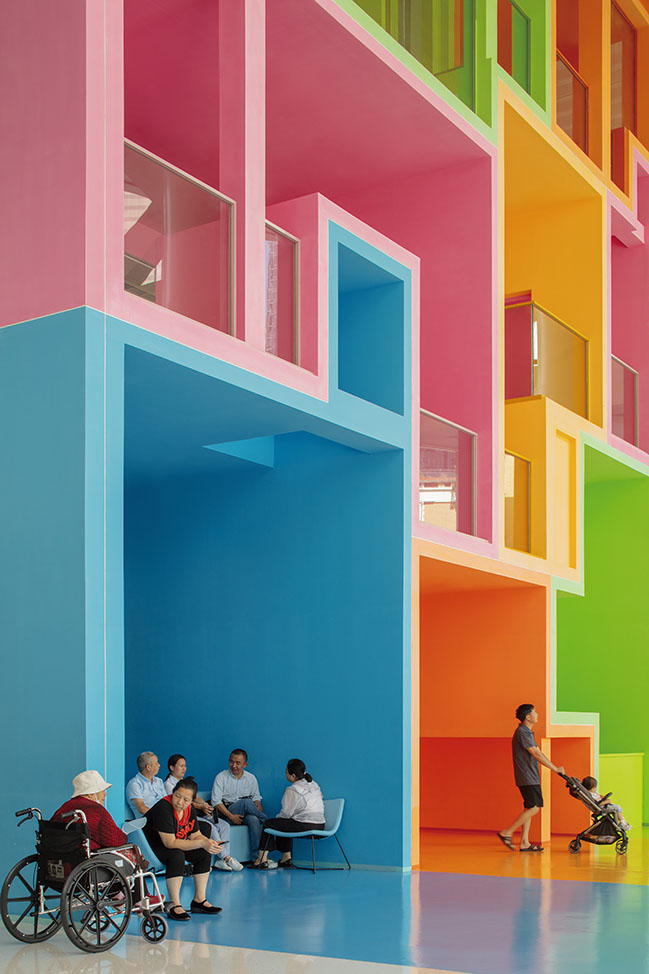
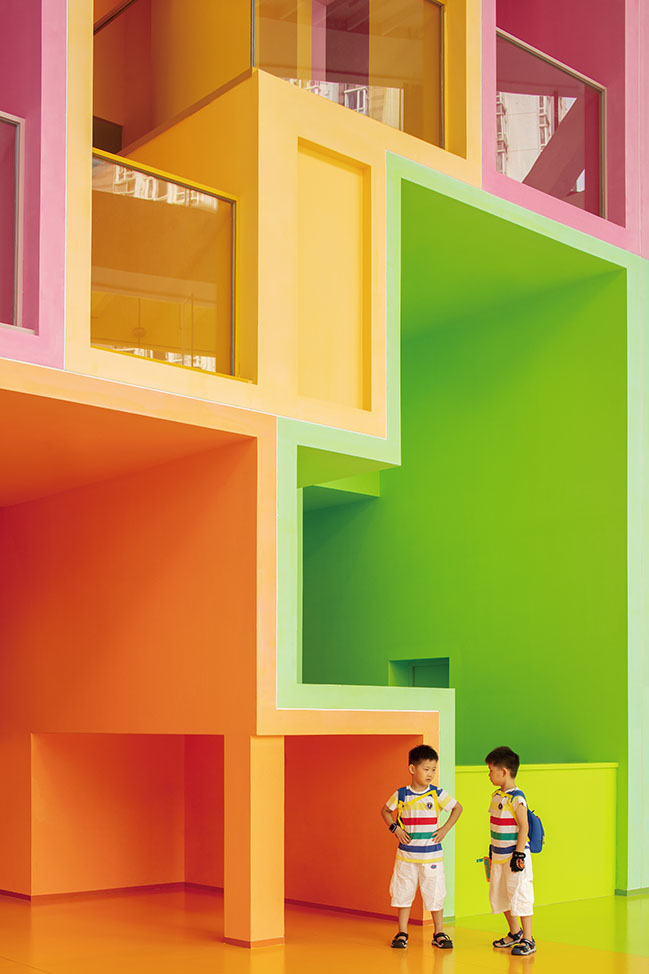
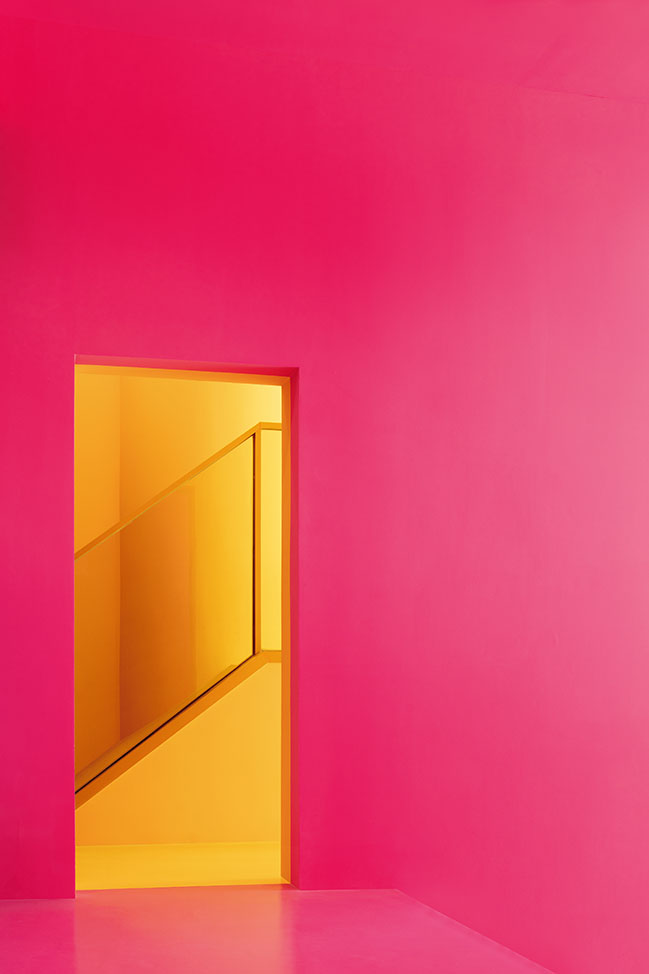
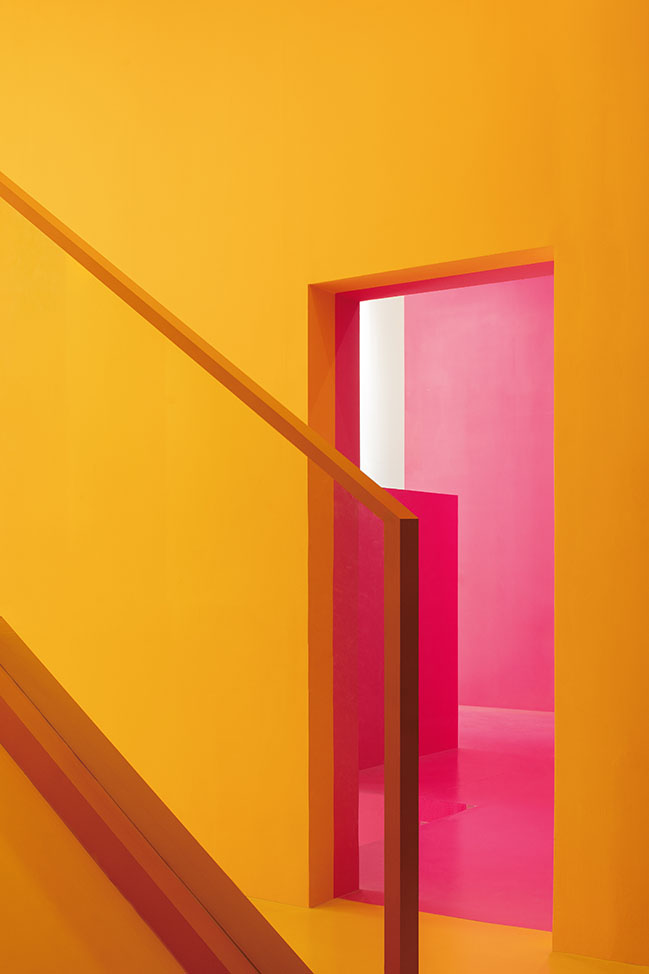
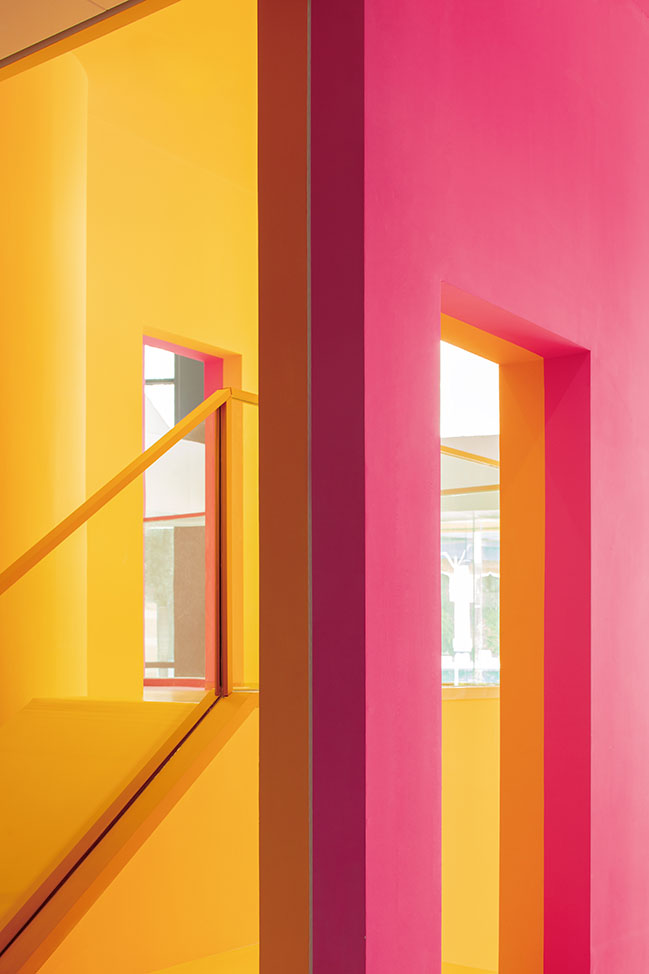
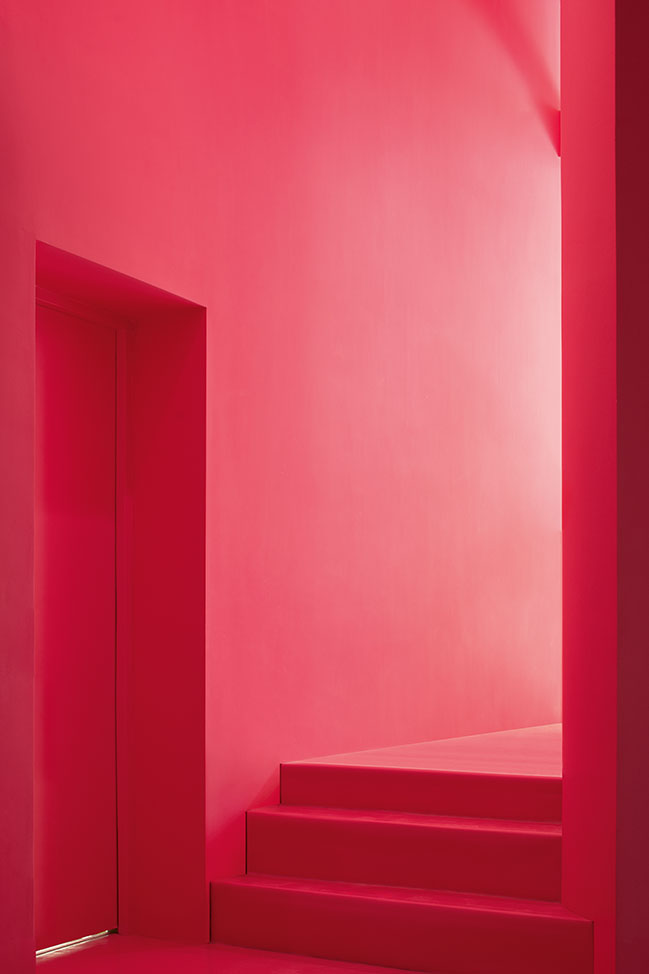

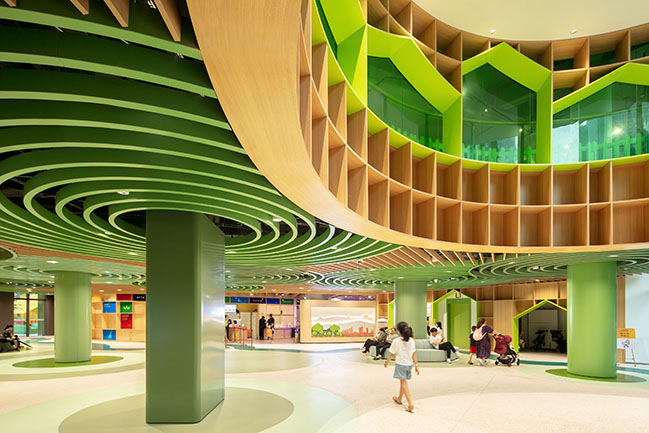
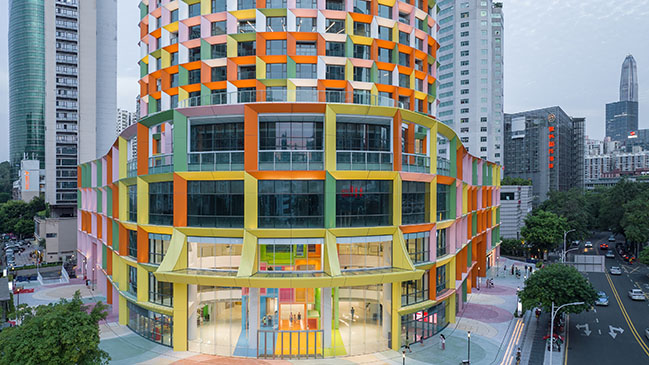
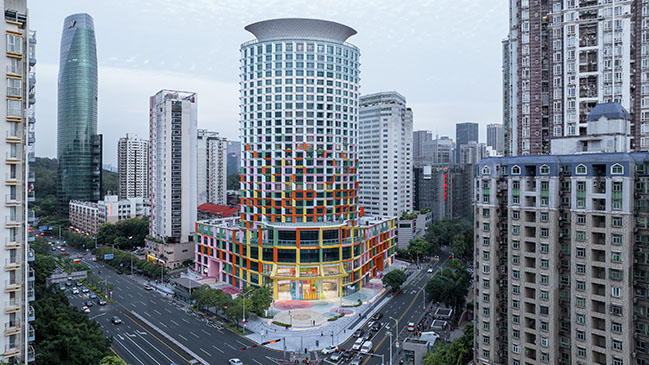
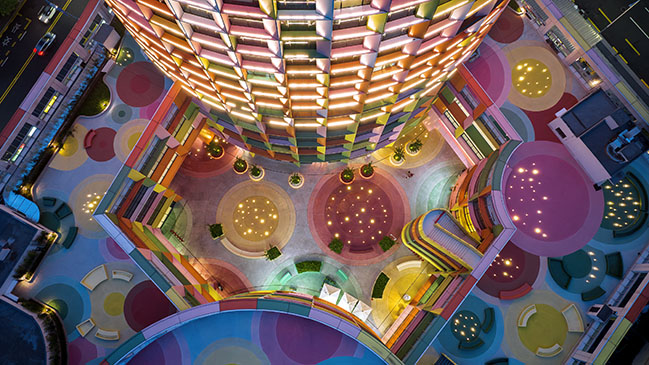

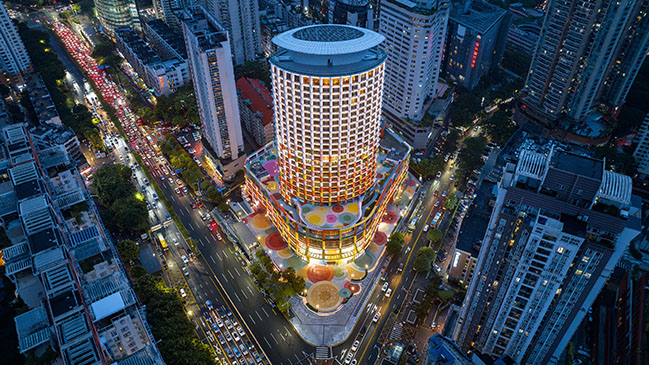
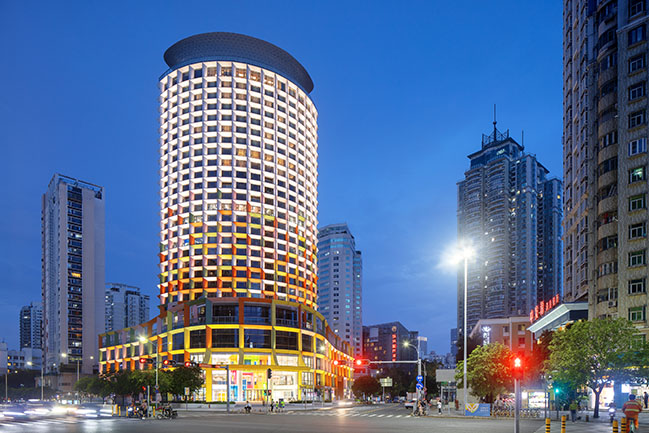
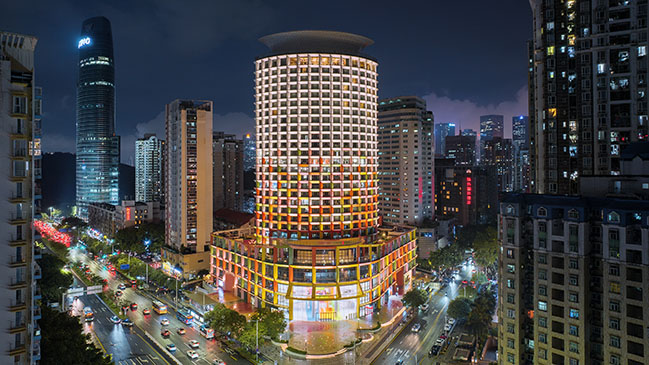
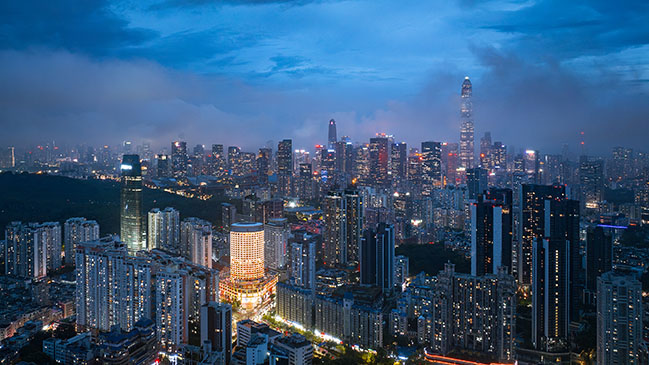
Shenzhen Women and Children's Centre Hotel Room by MVRDV
06 / 04 / 2024 A colourful inhabited wall enlivens flexible, family-friendly hotel suites in MVRDV's Shenzhen Women & Children's Centre...
You might also like:
Recommended post: Worrell Yeung Designs Chelsea Loft for Art-Collecting Family
